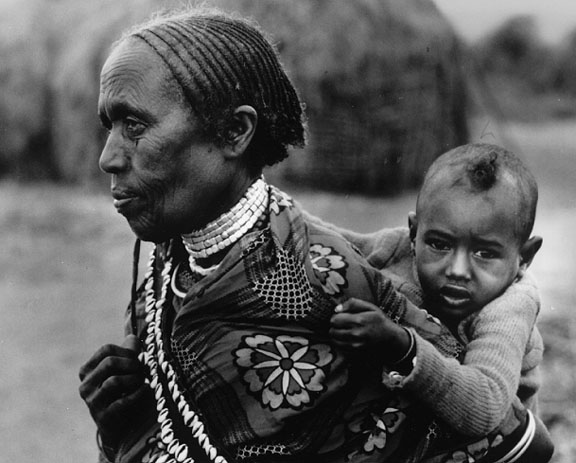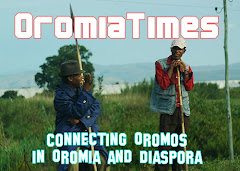Part II
Saturday, March 18:
Dreams of Cattle
The day begins with a cow standing in the road. Its legs quiver as two teenage boys support it gently, as they would an elderly relative. Carefully, they ease it across the street while cars grind to a halt. Its shaking subsides eventually as it regains its balance and slowly walks towards the rest of the herd. The legs of the herders also stop trembling and they stand upright by the side of the road. The cars begin to move again and we whiz by the herd en route to see our partners.
Only a few kilometers away, the four of us meet up with Sirach Addulahi from our partner organization Action for Development (AFD). We greet each other Ethiopian-style: shake right hands and then hit right shoulders together. I have actually become quite fond of this greeting, although at a height of 5'2" I am frequently jumping slightly to nudge shoulders.
Sirach is a wealth of information and also has the important quality of a sense of direction. Driving towards Gololcha water station it is easy to get lost, a lesson Retta and I learned the hard way last time. It seems like an endless landscape of bush with little to indicate where to turn and when until you happen to arrive in the right place. The water project was built last year because cattle were dying while trying to climb to reach a watering hole near the top of the mountain. Instead, AFD and Oxfam created a gravity-fed water system to bring the water down, creating a permanent water source.
On the way to the project, Sirach talks about what persistent drought means for Borena's people. Borena is losing its cattle -- many are dying and others are migrating elsewhere. What has been the best-known rangeland in Ethiopia is now overpopulated, and the fear is that this year's rainfall will be insufficient to make up for last year’s shortfall.
"If there is insufficient rain, and so insufficient grass, they may not return," he tells us. "It depends on the presence of the fodder." The pastoralist lifestyle gets harder and harder as time goes on and I ask if it’s sustainable any more under current conditions.
"The Oromo have a history and tradition of pastoralism in this area," Sirach answers. "In the early times, Oromo people raised cattle. When they came to Borena the land was not good for farming and so they continued to raise livestock. It is their history." He adds, however, that sometimes traditions have to adapt to the present and that time will tell if the current patterns of nomadic herding will have a place in Borena’s future.
We say goodbye to Sirach and arrive at Moyale, a town near the Kenyan border, in the early evening. Our partner Dawit from the Research Center for Civic and Human Rights Education (RCCHE) immediately takes us to the riverbed dividing Ethiopia and Kenya. It's filled with cattle carcasses and the stench is potent.
I spend the first few moments watching Greg and Steven react to the situation and I realize how terrible this must look to them. It's an assault on the senses—the smell, the buzzing flies, the decomposition. The surviving cattle have a look I’ve become familiar with—mouths slightly ajar, heads tilted back, eye sockets looking at nothing and yet a certain expression on their faces. It's the face of livestock death and I know it well. I don’t even notice the smell as much anymore, only becoming aware of it after watching others react.
I photograph a dead cow and the dust where its stomach was begins to quiver. The grains of earth are maggots, so tiny that they had escaped my attention, and they devour what was left of the animal. Some of the animals in the riverbed were immersed in small pools of water from the rain and a mold or fungus has begun to grow on them. That is the kind of thing that worries me—people are drinking the water downstream and water contamination could turn out to be a major problem here.
At night I go to sleep and dream of cattle.
www.oxfamamerica.org

















No comments:
Post a Comment